![]()
January 2012
This study updates and supplements the ITIC’s June 2011 study of the Muslim Brotherhood. It examines the Muslim Brotherhood in Egypt and other Arab countries in the wake of the past year’s regional uprisings. It deals with the nature of the movement in each country, its relations with the various regimes and evaluates its chances of exploiting regional unrest to its own ends. It also examines the Muslim Brotherhood’s branches in Western European countries and the implications of its activity for both internal European affairs and the Palestinian-Israeli conflict.
Following the uprisings in the Arab world and since the overthrow of the Mubarak regime, the status of the Muslim Brotherhood has risen significantly both in Egypt and with the international community. Since its founding in 1928 it had been persecuted by various regimes and considered their principal rival, but today it is a legitimate political power.
The Muslim Brotherhood[8] in Egypt underwent a number of important stages in its development, during which its ideology and methods changed.
1) 1928-1954: Defining its structure and direction and establishing its position in society.
2) 1954-1970: Isolation and confrontation with Nasser’s regime and a serious schism in the movement ideology between radicals and pragmatists (the mainstream Muslim Brotherhood).
3) 1970-early 1990s: Relative political openness within the Egyptian regime, the departure of the more radical factions and the beginning of integration into the political system.
4) Middle 1990s to January 2011: Increasing repression by the Mubarak regime and tensions and uncertainty within the movement regarding its identity (religious-social movement vs. political party).
5) From January 2011: Evolution into a legitimate political power and integration into the governmental system of the “new Egypt.”
Today, although the movement did not lead the protests which eventually toppled the Mubarak regime, it made the greatest amount of political capital from the changes and emerged as the organized, experienced force within the internal political arena. That was made clear by the recent parliamentary elections, the first important stage in turning rule over to an elected civilian leadership. In the first round of the elections, the Freedom and Justice party, the Muslim Brotherhood’s political wing, received 40% of the votes. According to initial media reports, it received 47% in the second round.
Moreover, its status also improved in the trade and student unions. It identified the democratization of Egypt as a historic opportunity to translate its strength as a social organization into significant political power. It seeks a position of strength in the administration (the parliament and government), which will enable it to promote its vision of turning the country into an state governed according to Islamic religious law and to influence policy. Therefore it insists that the future parliament be the dominant factor in formulating the country’s new constitution. They intend to use the new constitution to influence the relations between religion and state and to limit the status of the army in the governmental system.
To that end, the movement represents itself as moderate and pragmatic, especially with reference to its commitment to the values of democracy, religious freedom and equal rights, while veiling its true intentions. In addition, while it distances itself from the more extremist Islamist elements, such as the Salafists, it joins forces with liberal, secular elements (such as the Tomorrow Party), including the coalition slate running with it for parliament. It also glosses over its fundamental attitude toward Israel, which is a complete rejection of the right of the State of Israel to exist, and instead publicly adopts the more moderate approach common to most of its political partners, which opposes all forms of normalization with Israel and calls for the peace treaty between the two countries to be reexamined.
In effect, whether because of its success in allying fears or in recognition of its growing power, the international community (including the United States and the European Union) has become more interested in improving relations and opening lines of communication with it. That is apparently in preparation for the day after the elections, when the movement is expected to fill an important role in the Egyptian governmental system. In addition, there has also been a significant improvement in the Egyptian Muslim Brotherhood’s relations with affiliated movements in Jordan, Turkey (the ruling AKP party) and Hamas in the Gaza Strip.
Important Figures in the Egyptian Muslim Brotherhood Leadership
Dr Mohammed Badie al-Majid Sami
1) Role: General Guide (as of January 2010)
2) Personal history: Born 1943 in Al-Mahallah al-Kubra, married and father of three, son-in-law of the fifth general guide, Mustafa Mashhur. PhD. in veterinary medicine from Zagazig University, lectured at the universities of Asyut and Zagazig, chaired the general veterinarians’ trade union.
3) Movement involvement: Member since the early 1960s, member of the Guidance Office since 1966, and of the Global Guidance Office since 2007. Arrested and sentenced to prison several times for movement activity between 1965 and 2008, the last during municipal elections.
4) Ideology: Initially influenced by Sayyid Qutb. Considered a prominent representative of the movement’s conservative school of thought.
5) Additional information: Lackluster, careful leader without vision or charisma, elected as a compromise between the movement’s power players.
Dr. Khairat al-Shater
1) Role: Deputy General Guide. Considered the movement’s “financial brain” and main fundraiser.
2) Personal history: Born 1950 in Dakahlia, married to sister of Guidance Office member Mahmoud Ghazlan; his daughter is married to Ghazlan’s son. Holds a BA in engineering from Alexandria University and a diploma in liberal arts from Al-Shams University, as well as a diploma in Islamic studies.
Holds a PhD in computer studies from London University. In addition, he has worked in commerce and been on the board of directors of several companies and banks. He owns more than ten companies and his personal fortune is estimated at 100 million Egyptian pounds (about $16,600,000).[9]
3) Movement involvement: Officially joined the Muslim Brotherhood in 1974 but participated in Islamic activities as early as 1967 (may have initially been a follower of Nasser). Member of the Guidance Office since 1995. Detained a number of times starting in 1968, in 1995 for five years, and in 2007 for four years on charges of financing terrorism and laundering money.
4) Ideology: Leans toward the reformist school, but in practice sits on the fence between conservatives and reformists. Although popular with the movement’s younger generation, he is said to be embraced by the old guard.
5) Additional information: Considered the movement’s strongest and most influential figure and nicknamed the Iron Man because of his control over the movement’s sources of money.
Dr. Mohammed Morsi
1) Role: Chairman of the Freedom and Justice party.
2) Personal history: Apparently born in the 1950s; headed the Department of Materials Engineering in the Engineering Faculty at Zagazig University.
3) Movement involvement: Member of the People’s Assembly and chairman of the Muslim Brotherhood faction in the parliament (2000-2005).
4) Ideology: Apparently belongs to the reformist faction.
Dr. Issam al-Din Mohammed Hussein al-Aryan
1) Role: A deputy chairman of the Freedom and Justice party.
2) Personal history: Born 1954, in Giza. BA in medicine, diploma in law, diploma in Islamic law from Al-Azhar University. Founding member of Egyptian human rights organization.
3) Movement involvement: Apparently joined in the 1970s. Helped found educational Islamic activities at Cairo University and other Egyptian universities. Was a member of the People’s Assembly from 1987 to 1990 (representing the northern Cairo neighborhood of Imbaba). Helped spearhead the movement’s political integration in the 1980s. Headed the political bureau was movement information chief. Detained and imprisoned a number of times (notably between 1995 and 2000, and for the last time three months in 2010).
4) Ideology: Reformist.
5) Additional information: Very active, influence member of the movement. Politically experienced, charismatic, knows how to position himself as a “fighter for democracy” in his dealings with the West, and was considered the movement’s liaison with the United States, although he denies it.
6) Recent remarks: Following the victory of the Muslim Brotherhood in the first round of elections to the People’s Assembly, he said his party was moderate and just, and claimed it wanted to institute the fundamentals of Islamic law in a fair way, respecting human rights and personal liberty. He also said he hoped that everyone would accept a democratic regime and claimed that his party respected people’s choice of religion and lifestyles (Telephone conversation with AP, December 4, 2011).
Dr. Mohamed Saad al-Katatni
1) Role: Secretary General of the Freedom and Justice party
2) Personal history: Born 1952, holds a BA in liberal arts and a PhD in science, taught botany in the Faculty of Science at Al-Minya University. Member of Amnesty International, and the secretary general of the faculty guidance club at Al-Minya University since 1990.
3) Movement involvement: Co-founder of the inter-party, national faction and trade union coordinating committee. One of the leaders of the movement’s political involvement. Member of the Guidance Office since June 2008. Serves as the movement’s representative at international conferences outside Egypt.
4) Ideology: Important reformist figure.
5) Additional information: Active in many fields, especially politics.
![]()
Read the other sections here:
1. The Muslim Brotherhood in the Arab World and Islamic Communities in Western Europe: an overview
2. The Muslim Brotherhood in Egypt
3. The Muslim Brotherhood in Syria
4. The Muslim Brotherhood in Jordan
5. The Muslim Brotherhood in Algeria
6. The Muslim Brotherhood in Sudan
7. The Muslim Brotherhood in Saudi Arabia
8. The Muslim Brotherhood in The United Arab Emirates
9. The Muslim Brotherhood in Lebanon
10. The Muslim Brotherhood in Morocco
11. The Muslim Brotherhood in Tunisia
12. The Muslim Brotherhood in Europe
![]()
Notes:
[8] A more comprehensive report about the Muslim Brotherhood in Egypt than the one issued in June 2011.
[9] At the current rate of exchange, December 2011.



 RSS
RSS


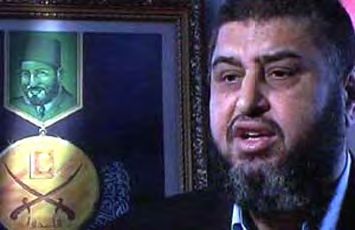
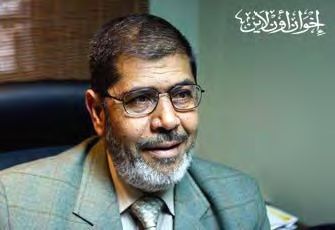
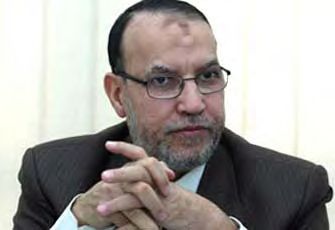
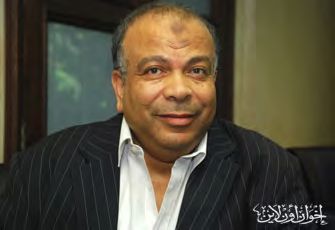
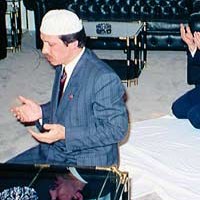

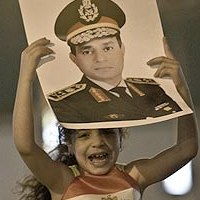
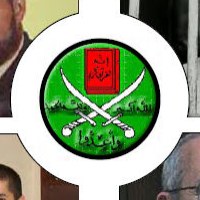







[…] 2. The Muslim Brotherhood in Egypt […]
[…] 2. The Muslim Brotherhood in Egypt […]
[…] 2. The Muslim Brotherhood in Egypt […]
[…] 2. The Muslim Brotherhood in Egypt […]
[…] 2. The Muslim Brotherhood in Egypt […]
[…] 2. The Muslim Brotherhood in Egypt […]
[…] 2. The Muslim Brotherhood in Egypt […]
[…] a) Egypt […]
[…] 2. The Muslim Brotherhood in Egypt […]